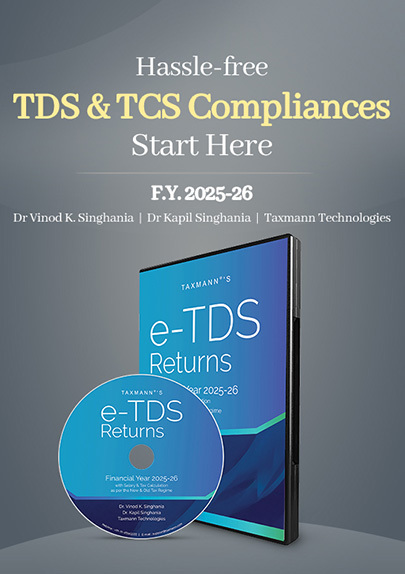[Opinion] A Revamped Section 268A | Deciphering Alterations in Safeguards That Tilt the Balance Against Assessees
- Blog|News|Income Tax|
- 2 Min Read
- By Taxmann
- |
- Last Updated on 10 January, 2025

Ramkishan Choudhary & Parv Jain – [2025] 170 taxmann.com 154 (Article)
Section 268A of the Income tax Act (“the Act”) was inserted via the Finance Bill, 2008 with the main objective of reducing litigation and to fix the monetary limits on filling appeal or a SLP. This year, Central Board of Direct Tax ‘CBDT’ made several alterations in the Section 268A of the Act via Circular No. 5 of 2024 and Circular No. 9 of 2024 wherein various new exceptions to the monetary limits as prescribed in the section were introduced where the decision to file an appeal would be taken on merits without regard to the tax effect and the monetary limits.
In recent times, while there has been a commendable increase in debates on any new advancement within the Indian Tax Domain, it is dismaying how there is very limited discussion around certain key developments, including recent circulars on the Section 268A of the Act. The objective for which the provision was brought has lost its charm and becoming significantly diluted and deviated. This article delves into the background of Section 268A, examining how this provision has evolved over the years. It also seeks to uncover the legislative intent behind this section and analyze the ways in which the Revenue has diverged from its core objective
Background
The Hon’ble Supreme Court in Dy. CIT v. Berger Paints India Ltd. [2022] 142 taxmann.com 279 (Kolkata – Trib.) laid down various important principles emphasizing fairness and consistency in reducing litigation and ensuring that the assessee is treated equitably. Section 268A of the Act was introduced with the objective to align with these principles laid down in the Burger Paints Case. In the Circular No.1 of 2009, the revenue provided the explanatory notes to the provisions of the Finance Act, 2008 which outlines the primary rationale behind the introduction of the Section 268A. Two key objectives can be inferred from the explanatory notes:
- To reduce litigation in small cases.
- To protect revenue’s right to file an appeal and when not to file an appeal to bring some consistency in the litigation approach.
Following the insertion of the Section 268A of the Act in 2008, the board has issued several circulars to establish the monetary limits for filling an appeal and to introduce new exceptions to these monetary limits. In a growing economy, it is justifiable to revise the monetary limits to address the increasing tax effect of the assessee. This is also reflected by the fact that the Hon’ble Supreme Court disposed of 573 direct tax cases after the monetary limits to file appeal were revised in the Union Budget 2024-25. However, the issue arose when the Board started to incorporate exceptions to the section. While the earlier exceptions were broad and logical, recent circulars have brought in exceptions that are highly specific and narrowly focused. This change raises an important question: What is the actual objective of Section 268A of the Act?
Click Here To Read The Full Article
Disclaimer: The content/information published on the website is only for general information of the user and shall not be construed as legal advice. While the Taxmann has exercised reasonable efforts to ensure the veracity of information/content published, Taxmann shall be under no liability in any manner whatsoever for incorrect information, if any.

Taxmann Publications has a dedicated in-house Research & Editorial Team. This team consists of a team of Chartered Accountants, Company Secretaries, and Lawyers. This team works under the guidance and supervision of editor-in-chief Mr Rakesh Bhargava.
The Research and Editorial Team is responsible for developing reliable and accurate content for the readers. The team follows the six-sigma approach to achieve the benchmark of zero error in its publications and research platforms. The team ensures that the following publication guidelines are thoroughly followed while developing the content:
- The statutory material is obtained only from the authorized and reliable sources
- All the latest developments in the judicial and legislative fields are covered
- Prepare the analytical write-ups on current, controversial, and important issues to help the readers to understand the concept and its implications
- Every content published by Taxmann is complete, accurate and lucid
- All evidence-based statements are supported with proper reference to Section, Circular No., Notification No. or citations
- The golden rules of grammar, style and consistency are thoroughly followed
- Font and size that’s easy to read and remain consistent across all imprint and digital publications are applied



 CA | CS | CMA
CA | CS | CMA
